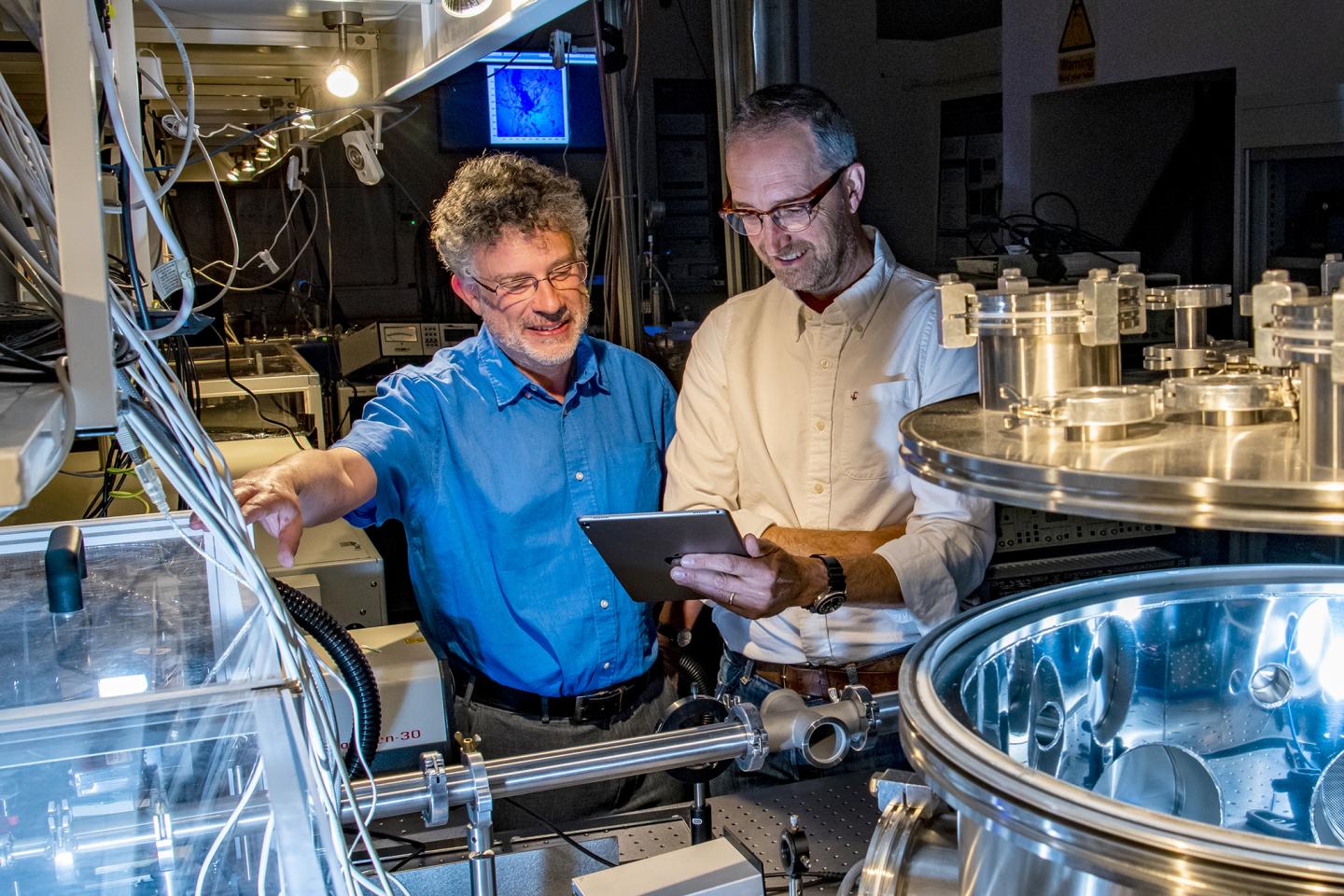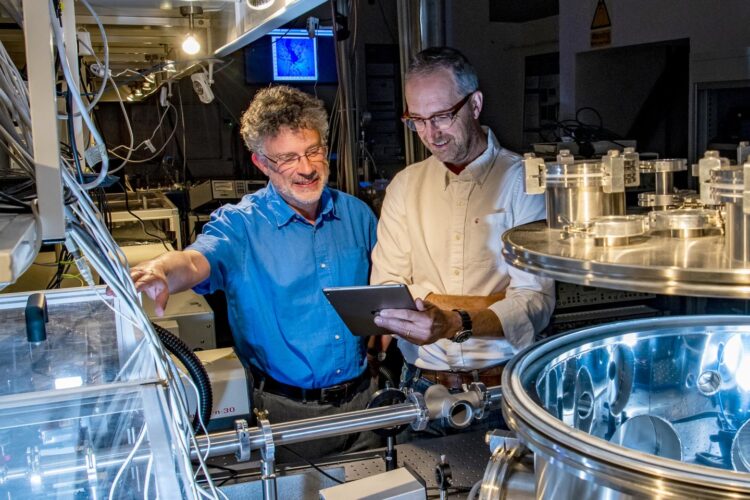
Credit: University of Southampton
Scientists have published highly-detailed images of lab-grown neurons using Extreme Ultraviolet radiation that could aid the analysis of neurodegenerative diseases.
The international study, led by the University of Southampton’s Dr Bill Brocklesby and Professor Jeremy Frey, used coherent Extreme Ultraviolet (EUV) light from an ultrafast laser to create images of the samples by collecting scattered light, without the need for a lens.
The technique produced extraordinary detail compared to traditional light microscope images, raising the possibility of potential applications in medicine including the study of Alzheimer’s disease.
Researchers have published their findings in Science Advances.
The team performed the work at Southampton and at the Artemis facility in the Rutherford Appleton Laboratory, Harwell. The small-scale demonstration reveals that extra detail can be sampled without large, expensive facilities such as synchrotrons and free electron lasers.
Dr Bill Brocklesby, of the Zepler Institute for Photonics and Nanoelectronics, says: “The ability to take detailed images of delicate biological structures like neurons without causing damage is very exciting, and to do it in the lab without using synchrotrons or other national facilities is a real innovation.
“Our way of imaging fills an important niche between imaging with light, which doesn’t provide the fine details we see, and things like electron microscopy, which require cryogenic cooling and careful sample preparation.”
The collaborative research combined Southampton expertise with Dr Richard Chapman and his team at the Central Laser Facility, and research partners from Germany and Italy.
The EUV imaging technique processes multiple scatter patterns from a sample using a computer algorithm. The project compared EUV images of lab-grown neurons originating from mice with traditional light microscope images, revealing its much finer details. Unlike hard x-ray microscopy, no damage was observed of the delicate neuron structure.
Professor Jeremy Frey, Head of Computational Systems Chemistry, says: “It has been a long and sustained effort but highly rewarding. In April 2003, we started a journey with the award of an Engineering and Physical Sciences Research Council Basic Technology grant for New Technology for nanoscale X-ray sources: Towards single isolated molecule scattering.
“Some 17 years later, almost to the day, our paper in Science Advances demonstrates that the effort was well worth the hard work of our interdisciplinary team, obtaining the first ultra-high resolution images of a real biological sample using coherent soft-x-ray microscopy (ptyography). We are looking forward to applying our microscope to many biological, chemical and material problems.
“We continue to pursue even higher resolution with the ultimate aim of singe molecule imaging, a goal that now seems very much in view.”
EUV microscopy provides many advantages over optical, hard x-ray or electron-based techniques, however traditional EUV sources and optics have until now required large associated scale and cost.
This new approach has focused on nonlinear optical techniques and, in particular, from high harmonic generation (HHG) using intense femtosecond lasers. Following these results, the Artemis team in Oxford is working towards being able to offer regular access to this technique in the future.
The combination of tomographic imaging techniques with these latest advances in laser technologies and coherent EUV sources also has the potential for high-resolution biological imaging in 3D.
###
Notes to Editors
The paper “Quantitative and correlative extreme ultraviolet coherent imaging of mouse hippocampal neurons at high resolution.” has been published in Science Advances with DOI 10.1126/sciadv.aaz3025
For further information and interview requests, please contact Steve Bates, Media Relations Officer, University of Southampton. [email protected]; 07342 060429
The University of Southampton drives original thinking, turns knowledge into action and impact, and creates solutions to the world’s challenges. We are among the top 100 institutions globally (QS World University Rankings 2019). Our academics are leaders in their fields, forging links with high-profile international businesses and organisations, and inspiring a 24,000-strong community of exceptional students, from over 135 countries worldwide. Through our high-quality education, the University helps students on a journey of discovery to realise their potential and join our global network of over 200,000 alumni. http://www.
Media Contact
Steve Bates
[email protected]
Related Journal Article
http://dx.





